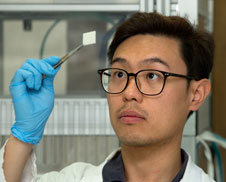 Image provided by StarMedia
Image provided by StarMedia
Christchurch researchers are growing veins in the laboratory as part of a project aiming to create large 3D-printed pieces of bone for use in orthopaedic surgery.
The work is being done by the University of Otago's Christchurch Regenerative Medicine and Tissue Engineering (CReaTE) Group.
CReATE's Dr Khoon Lim says a focus of tissue engineering researchers is being able to produce large, functional pieces of replacement bone, with their own blood supply or veins. The CReaTe group are world-leaders in this field of research.
Dr Lim says one of CReaTE's current projects is developing an implant to boost the healing of patients with traumatic bone fractures requiring surgery.
“Now when patients break bones, surgeons often graft bone from another part of the body. We are working on a way for patient's own cells to be implanted into the defect to harness the natural healing capacity of the body, without the trauma of graft surgery.”
Dr Lim says a personalized 'scaffold' would be 3D-printed to match the shape of the damaged piece of bone. Layers of human cells and proteins are then infused through the scaffold. When the scaffold is implanted in the patient, different proteins will be released at different stages of healing. The first stage is the growth of new blood vessels.
“The idea of what we are trying to achieve is that the patient can return to their normal activity of everyday life. This means that their broken bone, for example, is as strong and functional as it was before.”
The laboratory-stage work is being funded by the Health Research Council of New Zealand. Dr Lim hopes the technology could be used in surgery within five years.
CReaTe is part of the University of Otago, Christchurch's Orthopaedic Surgery Department. Professor Gary Hooper is head of the department and one of New Zealand's leading orthopaedic surgeons, so CReaTE's research is done with a view to how it could benefit patients.
